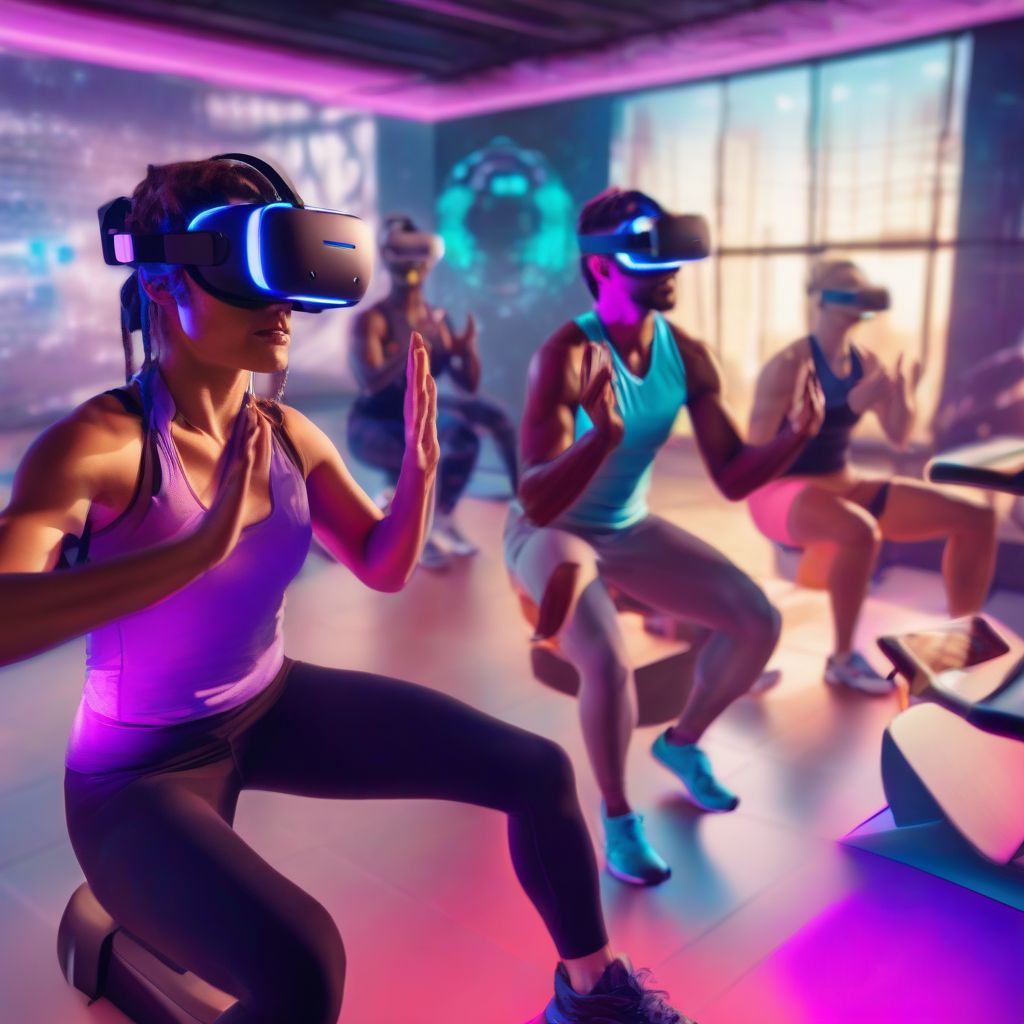Imagine waking up, grabbing your phone, and having a personalized workout session led by a world-class trainer, all from the comfort of your living room. This isn’t a futuristic fantasy, but the rapidly evolving reality of virtual fitness and app-based training. The way we approach fitness is transforming, driven by technology and a growing demand for flexible, accessible, and personalized exercise experiences. But what exactly does the future hold for this dynamic industry?
The Rise of Personalized Fitness Experiences
One of the most significant trends shaping the future of virtual fitness is personalization. Gone are the days of generic workout routines. Apps are leveraging data and AI to create customized programs tailored to individual fitness levels, goals, and preferences. Think heart rate monitoring integrated with workout adjustments, personalized nutritional guidance based on activity levels, and even AI-powered form correction to minimize injury risk. As Dr. Emily Johnson, a leading sports physiologist, notes, “Personalized fitness is not just a trend, it’s the future. Technology allows us to tailor workouts to the individual, optimizing results and promoting long-term adherence.”
AI-Powered Coaching and Feedback
AI isn’t just personalizing workouts; it’s becoming the coach itself. Sophisticated algorithms can analyze your performance, offer real-time feedback, and even provide motivational prompts to keep you engaged. Imagine an app that understands your limitations and encourages you with tailored advice, just like a human trainer. “The role of AI in fitness is transformative,” says Michael Davis, a certified personal trainer and tech enthusiast. “It’s like having a 24/7 personal trainer in your pocket, offering guidance and support whenever you need it.”
Immersive Technologies: Stepping into the Metaverse of Fitness
Virtual reality (VR) and augmented reality (AR) are poised to revolutionize fitness. Imagine stepping into a virtual cycling class that transports you to the Italian countryside or battling virtual opponents in a boxing ring, all from your living room. AR can overlay exercise instructions onto your real-world surroundings, enhancing your at-home workout experience. The lines between the physical and digital worlds are blurring, creating truly immersive and engaging fitness experiences. As VR and AR technology continues to evolve, we can expect even more realistic and interactive virtual fitness environments.
 Virtual Reality Fitness in Metaverse
Virtual Reality Fitness in Metaverse
Gamification and Social Interaction
Gamification is another powerful trend driving the future of virtual fitness. Apps are incorporating game-like elements, such as points, badges, and leaderboards, to increase motivation and engagement. This playful approach can make fitness more fun and less like a chore, particularly for those who struggle with traditional exercise routines. Moreover, virtual fitness platforms are fostering online communities where users can connect, share their progress, and motivate each other. This social aspect can be a powerful tool for accountability and long-term adherence.
Accessibility and Inclusivity: Fitness for Everyone
Virtual fitness breaks down geographical barriers, making fitness accessible to anyone with an internet connection. This is particularly beneficial for those in rural areas or those who lack access to traditional gyms. Furthermore, app-based training caters to all fitness levels, from beginners to seasoned athletes, providing tailored programs and modifications to meet individual needs. “Virtual fitness is democratizing access to exercise,” says Sarah Thompson, a certified yoga instructor and online fitness coach. “It empowers individuals to take control of their health and wellbeing, regardless of their location or fitness level.”
The Evolving Role of Fitness Professionals
While technology is playing a central role in the future of virtual fitness, the role of fitness professionals remains vital. Trainers are increasingly leveraging technology to expand their reach and provide personalized services to a wider audience. They are becoming content creators, online coaches, and community builders, guiding and supporting their clients in the virtual world.
The Hybrid Approach: Bridging the Gap
The future of fitness isn’t solely virtual. A hybrid approach, combining virtual and in-person training, is likely to become the norm. Individuals may choose to attend in-person classes for specific activities, while utilizing virtual platforms for personalized workouts and ongoing support. This blended approach offers the best of both worlds, providing flexibility and personalized guidance.
Conclusion: Embracing the Virtual Fitness Revolution
The future of virtual fitness and app-based training is bright. Technology is driving innovation, creating personalized, engaging, and accessible fitness experiences for everyone. From AI-powered coaching to immersive VR workouts, the possibilities are endless. By embracing these advancements, we can empower individuals to take control of their health and wellbeing, paving the way for a healthier and more active future. What are your thoughts on the future of fitness? Share your perspectives in the comments below and let’s discuss the exciting possibilities that lie ahead!



